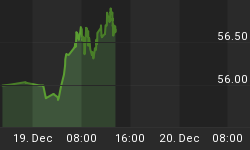This is the economic dichotomy that FOMC members will be contemplating next week. Today's economic releases exemplify this dichotomy. Although the headline figure of a 5.5% increase in new orders for durable goods in May suggested that U.S. manufacturing was anything but wilting, once you began to examine the internals of the report, you came away with a different impression. The May surge in new orders was all about Boeing's nondefense book. Excluding civilian aircraft and parts, new orders for durable goods declined 0.3% in May. New orders for "core" (ex civilian aircraft) nondefense capital goods plummeted 2.3%. The April-May average of new orders for core nondefense capital goods is running at annual rate of minus 5.1% vs. the Q1 average, which, itself, advanced an annualized 21.8% vs. the Q4 average. This has ominous implications for Q3 GDP growth in capital spending. Even Q2 capital spending is looking shaky based on the shipments of core nondefense capital goods. The April-May average of these shipments is running at an annualized rate of 2.3% above their Q1 average. In Q1, shipments of core nondefense capital goods grew at an annual rate of 14.0%. These orders and shipments data of capital goods corroborate my view that Corporate America has low expectations for the real return on capital here in the US of A. This helps explain the low level of bond yields and corporations preference to use its cash flow to buy back their own stock or someone else's stock in an acquisition rather than expand their own physical plant. The downward trend in the ISM manufacturing index also corroborates this view.
But, on the bright side, we still build and sell houses here, thanks to Wall Street's ability to peddle risky mortgages. According to Loan Performance Inc., an outfit that does mortgage data analysis, 9% of new mortgages granted in Q1 were of the negative amortization type. Back in 2003, only 1% of mortgages granted were of this type. Real estate brokers are teaming up with mortgage brokers, posing the question to the potential buyer: "What's it gonna' take to put you into this McMansion?" So what if the amount you owe on the house keeps going up each month if the market value of your house keeps rising. And the market value can keep rising so long as exotic mortgage products can be created to allow subsequent potential buyers to keep bidding up the prices of homes. Oops! Better create some new exotic mortgage products because increases in the prices of new houses are slowing down significantly, as shown in the chart below. After hovering in the double-digit range for most of 2004, the year-over-year percent change in the 3-month moving average of the median price of a new single-family home was only 4.8% in May. The "carry" profit on new homes seems to be diminishing. Maybe sales price increases have to be moderating to continue to move the "lumber." New home sales increased by 2.1% in May to an annualized unit pace of 1.298 million units - just narrow lot line from the record unit sales pace of 1.306 million set back in October 2004.

This economic dichotomy will not give the FOMC any trouble in reaching a policy decision on June 30. It is going to raise its funds rate target by 25 basis points to a level of 3.25%. But it might give them some pause for thought about a pause after the June 30th rate hike. I would not be surprised if the FOMC removed the phrase "even after this action, the stance of monetary policy remains accommodative" from its policy announcement of the June 30th funds rate hike. If policy is no longer accommodative, it might be approaching "neutrality." The removal of this phrase sets the stage for the FOMC to pause either at the August 9 meeting or the September 20th one.















